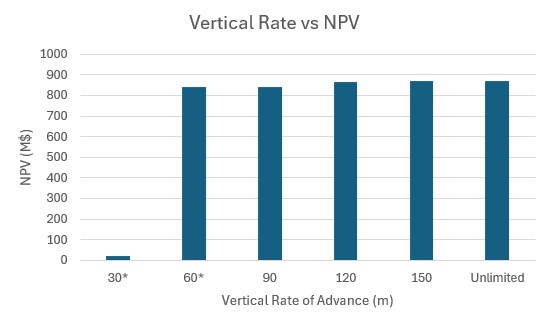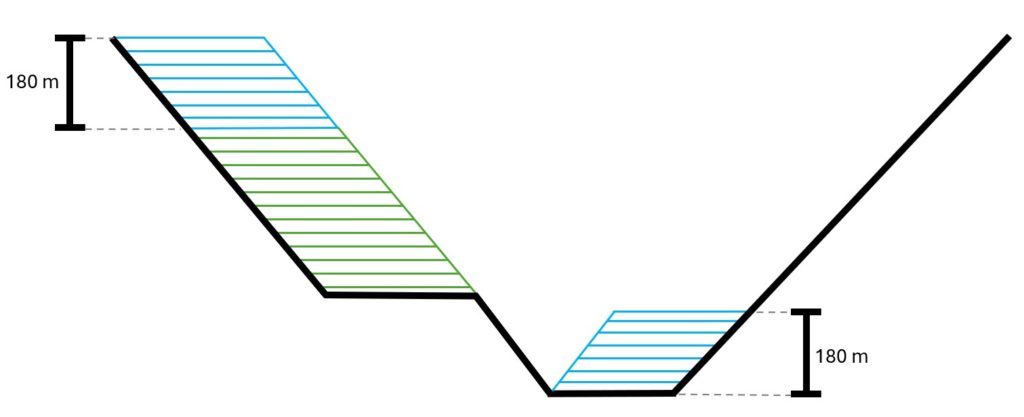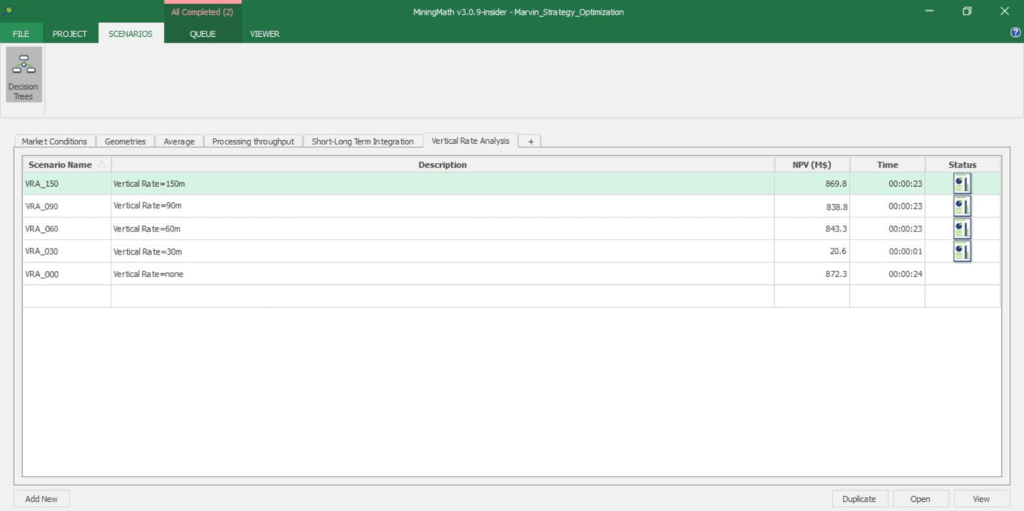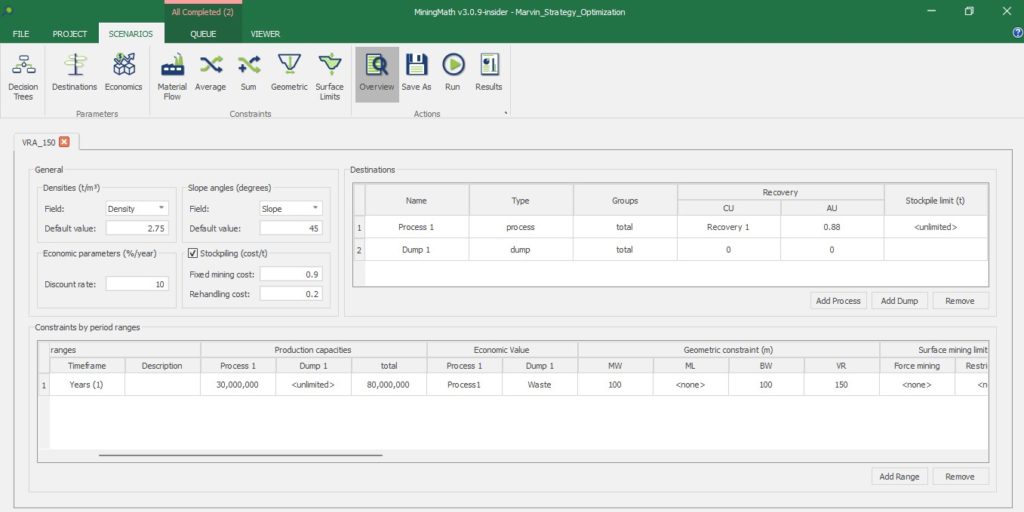Vertical Rate
Highlights
Controlling the vertical rate of extraction is critical in mining operations to maintain geotechnical stability and optimize resource recovery over time. Managing this constraint ensures safe progression through the orebody while aligning with operational and economic goals.
- MiningMath integrates vertical rate constraints directly into the optimization model, enabling simultaneous consideration of extraction sequencing and rate limits to maximize net present value without compromising safety or operational feasibility.
- Its unique approach allows rapid scenario iteration and adjustment of vertical rate parameters within the same integrated framework, reducing manual rework and supporting faster decision-making under varying geological and operational conditions.
- The methodology is validated by academic research and applied globally, providing a robust, practical tool that balances extraction pace with profitability, supported by automation and flexible scripting via API for tailored mine planning workflows.
Definition and calculation
The vertical rate of advance (or siking rate) is defined as the vertical distance, in meters, mined in each period, and it is calculated by evaluating each mining face independently, as shown in this figure.
The total vertical distance mined across all periods should be consistent with the pit depth and equipment available. In cases of unfeasibility this parameter will respect the constraints hierarchy in which it is placed at a lower priority.
Complexity and recommendations
The vertical rate of advance (VR) is a complex parameter within the optimization. The VR works as an upper bound to avoid operationally unfeasible solutions. Therefore, testing different values is a great strategy to identify opportunities that could bring the best mining sequence and NPV.
The Mining Width (MW) is not mandatory when using VR, but it plays an important role when defining its value. The MW and VR, together, define volumes of material for each mining period. A reduced MW might create additional challenges for the algorithm to comply with the VR. Therefore, it is important to play with different values, especially when VR is not being fully respected.
Vertical Rate: Definition, Hierarchy of Constraints & Complexity
Example evaluation
To evaluate different values for the VR constraint, you can use Decision Trees. The figures below depict a base case for VR evaluation using the Marvin dataset and a respective decision tree built with different VR values.
Notice the fluctuation in NPV illustrated below, influenced by this singular parameter. Additionally, take note that smallest values like 30m (equivalent to block height) and 60m trigger warning violations in the generated report file. This indicates that MiningMath’s algorithm had to adapt the VR constraint for a viable solution to be achieved, keeping other indicators, such as tonnage, within limits. You can see more on the next section on how to prioritize the VR constraint in case adjustments like that are necessary to achieve feasible solutions.

Evaluate VR values for risk analyses
Evaluating different values of VR can lead to unexpected results. For example, when restricting the VR (lower values), results might not necessarily achieve lower NPVs (understand why here). At the same time, higher values of VR could also lead to a higher NPV compared to a certain base case. A more advanced approach could be the use of different VR values for specific timeframes of your project (usually in future periods).
With MiningMath, you can experiment with various VR values and analyze their resulting consequences, particularly economic ones, empowering your team to present compelling arguments for proposing project changes.
The vertical rate of advance is one of the first constraints to be relaxed within MiningMath’s Hierarchy of Constraints (read more). To ensure VR is at least closer to what you need, relax low-priority constraints manually. This way you will lead the algorithm to a more flexible scenario and a broader solution space, which may help it to find a feasible solution for the new set of constraints.
Besides, if the user aims to force a maximum vertical rate for a given period, it can be created a flat surface constraint regarding the achievable depth and input it as a Restrict Mining. Beyond that is important to notice that even the goal of achieving “process full” could result in a non-feasible solution while the VR is still respected, therefore, this feature is very sensitive to any other parameter.
Vertical rates controlled by surface constraints
In summary, it is crucial to assess various parameter values to gain a deeper understanding of how they can impact your project, particularly concerning geometric constraints. You can explore additional workflows presented here that can assist you in achieving better results.






